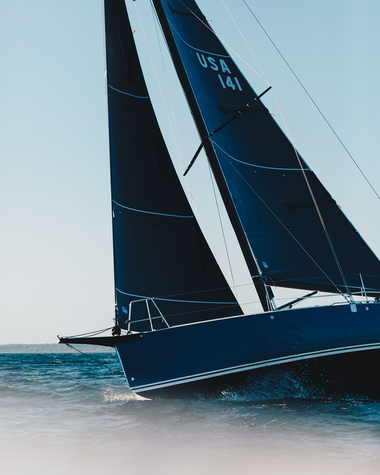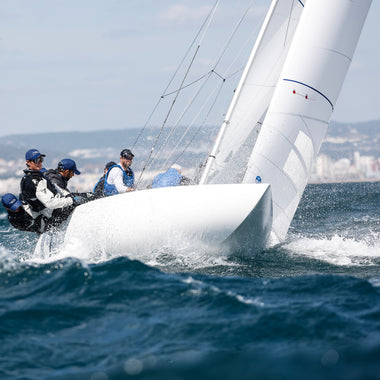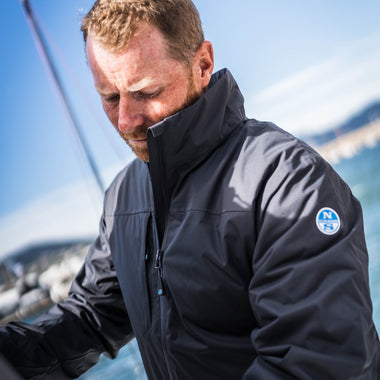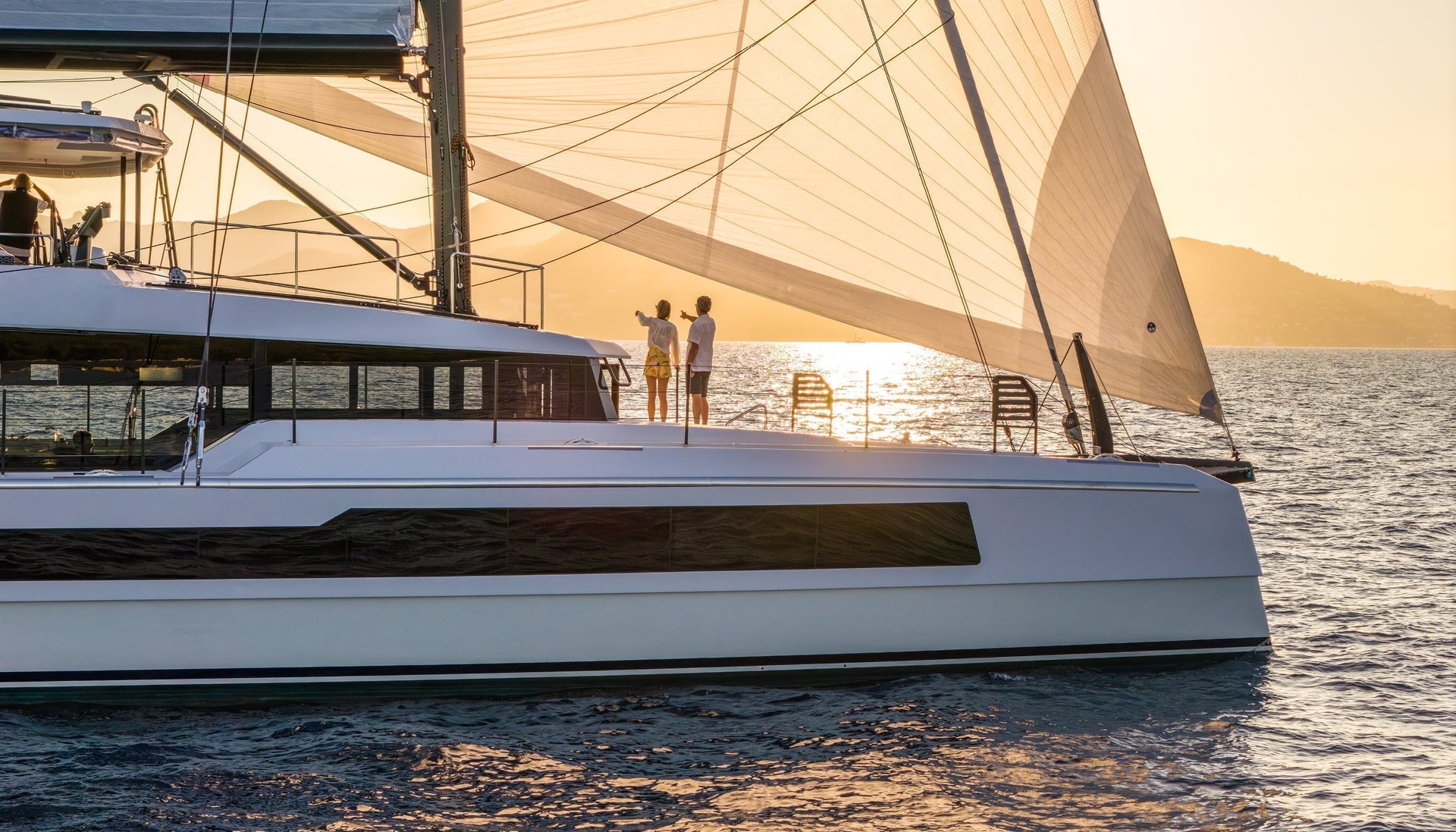DEPOWERING & POWERING-UP
SAIL POWER: DEPOWERING & POWERING-UP
By Bill Gladstone
This article is derived from the North U Trim Seminar. North U offers seminars, clinics, books, media, online training, and coaching. Visit NorthU.com to Learn More
In the previous segment we explored sail shape and sail power in moderate air, and how proper shape varies with sea state. In this segment we explore Angle of Attack in moderate air trim and also techniques for de-powering in heavy air and powering-up in light air.
Moderate Air Trim
Angle of Attack
At full power in moderate air we adjust the mix of depth and twist to suit the conditions – adding depth and twist as chop increasing to improve acceleration and create a wider steering groove, or trimming with less depth and less twist for higher pointing and higher speed in smooth water.
Meanwhile we adjust and fine tune angle of attack through steering and traveler to maintain full power, speed, and balance. Much of the time this falls largely to the driver – footing off when underpowered or feathering up when overpowered to keep the boat at full power.
As we push to the high end of moderate air, and particularly in puffy conditions, a helm response alone is not enough. In these conditions playing the traveler is also critical to maintaining proper heel, balance, and speed. (On boats without a traveler there are alternate techniques, covered in Sail Controls, later.) When the main trimmer is doing a great job the angle of heel and helm load will not change – the trimmer will play the traveler as the wind changes, down in the puffs and up in the lulls. When perfectly executed the main trimmer is really driving the boat upwind, with the rudder following along as a trim tab.

Heavy Air
De-Powering
In overpowering conditions sail power can be reduced by reducing angle of attack, by flattening the sail depth, or by increasing twist. Each reduces power, but which is preferred? Often it is best to start to de-power by flattening sails while keeping closed leeches to maintain pointing ability. This is the case as the wind often builds more quickly than the waves, so we get relatively smooth water in a building breeze.
In chop or waves it may be preferred to use twist to control power while maintaining depth for acceleration. If steering is difficult, then de-powering with twist can create a wider, more forgiving steering groove. Most commonly, the de-powering progression would include changes in both depth and twist.
Angle of attack is played moment to moment by the driver and trimmers to maintain speed, pointing and balance at full power: neither overpowered nor under-powered. A core challenge of upwind sail trim is achieving not just the correct total power, but the correct blend of angle of attack, depth and twist; and then adjusting total power and the mix to keep up with ever-changing conditions.

Steering in Waves
When the boat is difficult to steer in the waves that often means it is out of trim. If you’re underpowered as you squeeze up and knocked on your ear as you bear off it is not bad steering – it’s poor trim. Adding some twist and depth will create a wider steering groove and provide more punch to get through the waves. We are often told to steer up the faces and bear off down the backs of waves. We’re going to change that: If the boat is well trimmed it will find its own best path through the waves. You can help by playing the traveler (or sheet if vang sheeting) rather than steering with the rudder.

Light Air Trim
Less than Full Power
And what about light air, when we don’t have power to trade? When sailing in underpowered conditions we sail with a wide angle of attack to increase power, a deep sail shape for added power, and as little twist as possible without stalling airflow. As we’ve seen in earlier segments, trimming to the wind gradient often requires substantial twist in light air. The wide angle of attack and deep sail shape that add power in light air are also prone to stalling, so substantial twist in needed in lighter winds to encourage airflow and prevent stalling.

Re-Powering
In a fading wind the chop will often linger so power is added with depth as the breeze fades while twist is maintained to preserve a wide steering groove.
One final bit
We’ll see more on this theme of Mix of Power throughout the remaining Upwind Trim segments. We’ll also address the balance of power between the main and jib as part of our ongoing mix of power discussion.
Pro Tip (wink wink)
To protect your reputation as a sail trim expert NEVER make a change in trim as the breeze fades. Here’s why:
In a building breeze pretty much any change you make will improve speed, so when you see a puff coming, make a change. The puff hits and voila – performance and your reputation improve.
In a fading breeze, no matter what you do, performance will suffer. If you make a change as the breeze fades then your reputation will suffer along with performance – DON’T do it.
© Copyright Bill Gladstone










